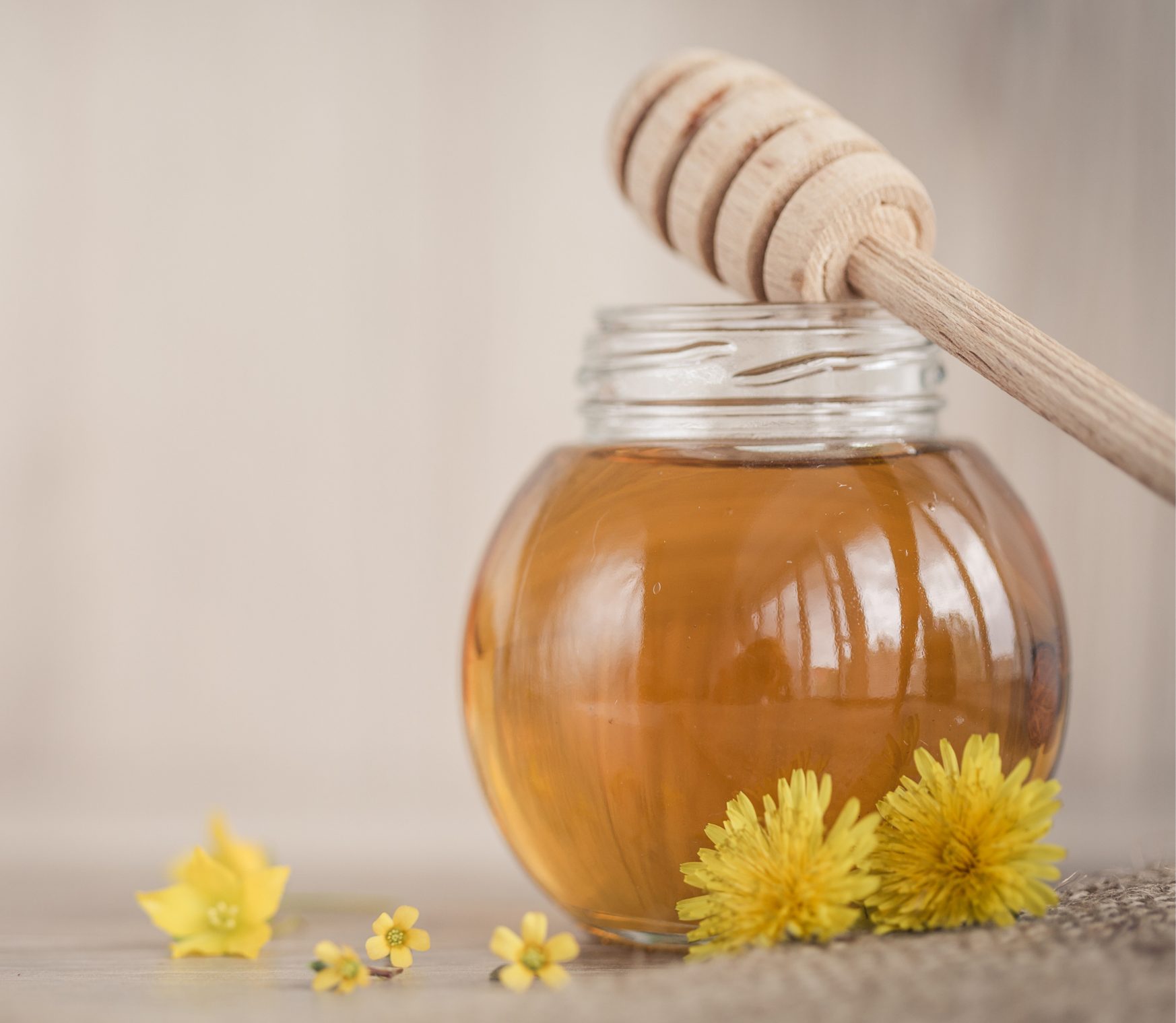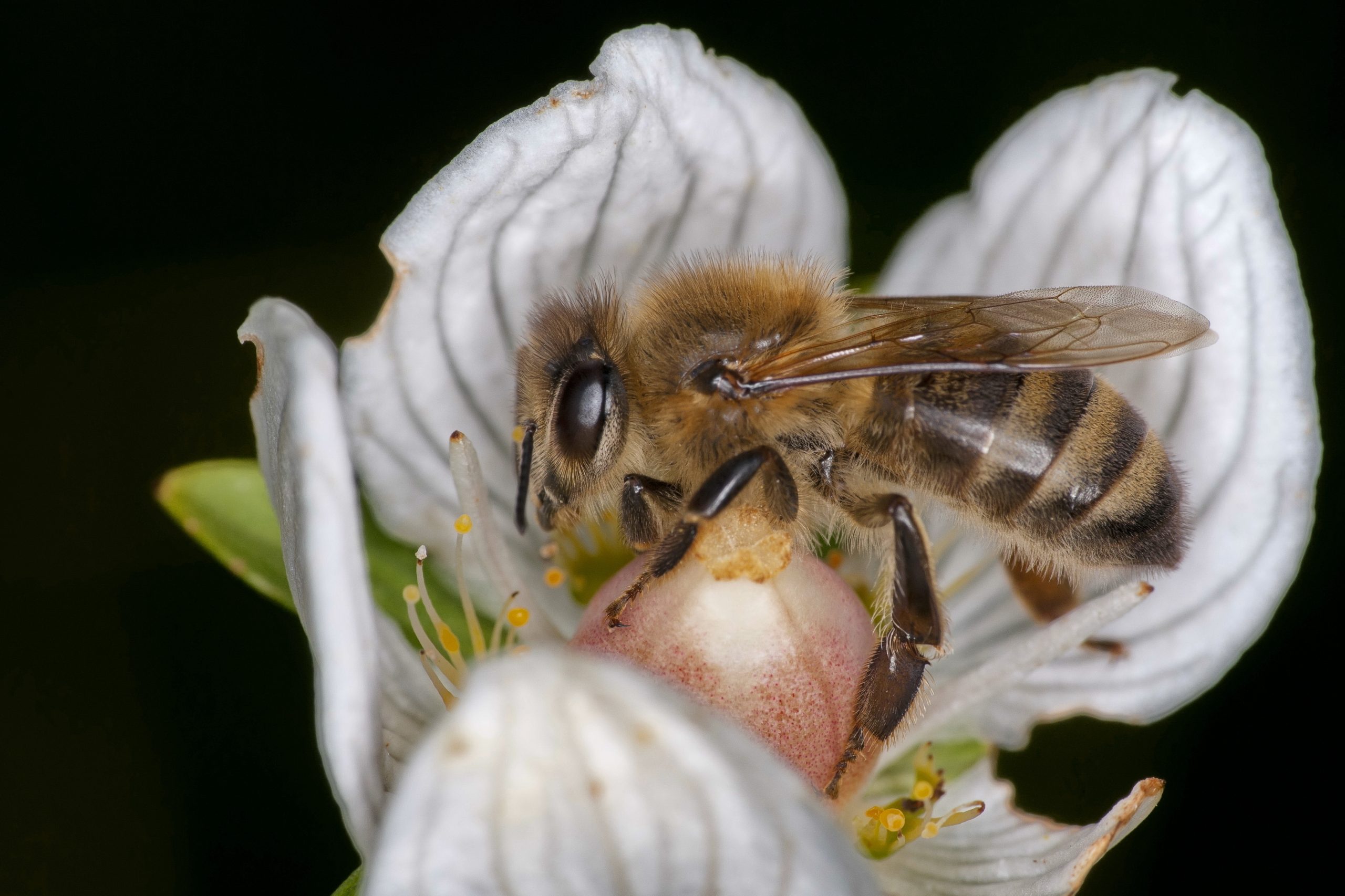
Idaho honey is mainly produced by Italian and Carniolan honey bees. Beekeeping in this state started back in the late 19th century and today it is one of the biggest bee suppliers for Carolina almond pollination. The most popular honey this state produces is clover honey.
When Did Idaho Begin Producing Honey?
It is not clear exactly when the European honey bee made its way to Idaho, but it was probably during the latter part of the 19th century. We do know that in 1894, a man named Nephi Ephraim Miller first began his honey business in Utah, and then established an Idaho office in 1917. Today, Miller’s Honey Farm is still in business but moved its operation to California.
Another beekeeper, Dalian Mills Cox, started his business in Utah around 1880 brought the company to Idaho in the early part of the 20th century. His son took over the market in 1925, and Cox Honey Farms exists to this day.
What Are the Main Types of Honey Idaho Produces?
Idaho honey sellers provide clover and wildflower honey to their retail suppliers and in their online stores. Idaho has so many floral resources that the bees feed on a variety of them, resulting in a multi-floral wildflower honey product. But clover is also abundant, and several of the top honey sellers in the state offer Idaho clover honey.

How Much Honey Does Idaho Produce?
While honey bees are not tasked with much crop pollination within Idaho, the state is one of the biggest shippers of bees for California almond pollination. The fees provided for bee “rental” are so lucrative that many Idaho beekeepers depend on this income for their survival.
As for honey production, Idaho’s honey bees made 2,944,000 pounds of honey in 2019, sourced from 92,000 hives.
Is Idaho Honey Produced All Year Round, or Is It Seasonal?
Honey is extracted near the end of the summer in Idaho. But it takes a lot of work during the other months of the year for that honey to be available.
The harshest bout of winter weather typically ends at the beginning of February, and the first thing a beekeeper will notice is that their bees have been cleansing the hive. Dead bees will appear outside the hive, and that is a good sign that overwintering has been successful. It is a good time to cheque on the bees to see how much they have left in their honey stores.
If honey supply is not adequate, the beekeeper will need to supplement feeding with a sugar solution. If the bees do not have proper nutrition early on in the year, they will not have the strength to begin foraging when blooms appear.
Late winter is also an excellent time to check for signs of diseases and then begin treatment for prevention. If diseases are not present, it is advised to remove drawn combs and honey and freeze them to kill wax moth eggs.
In early spring – around March or April – beekeepers should treat the hive for Varroa mites. Spring is also the time to monitor queen activity and make sure the hive is not too crowded.

Queens should be replaced if they are not reproducing adequately, and hives should be split if they are too crowded to avoid swarming. A swarm means the bees leave the hive, and beekeepers’ goal is to keep as many bees in the colony as possible to produce honey.
The significant honey flow occurs from May to July, and harvesting begins well before the last days of summer – around August 1st. The beekeeper will want to ensure they leave enough honey for the bees to store during the winter.
After the honey is extracted, beekeepers should weigh the hives. If they do not weigh at least 90 pounds, supplemental feeding at a higher sugar-to-water ratio is necessary.
A final mite treatment should be made, and the beekeeper should make sure that ventilation is adequate. Disease-free bees with a good food supply and proper ventilation will have a good chance of making it through the winter.
Are There Any Major Honey Farms or Apiaries in Idaho?
The following are honey suppliers/apiaries that have survived generation within the state of Idaho and are still thriving today:
- Browning’s Honey
- Cox’s Honey Farm
- Rocky Mountain Honey Company
- Steele Apiaries
Which Species of Honey Bee Creates Idaho Honey?
Idaho beekeepers order packages of bees – from within Idaho and all over the country. Many of these bee-sellers ship Italian honey bees (Apis mellifera ligustica). However, some beekeepers have found success with Carniolan bees (Apis mellifera carnica) since their more aggressive tactics can bring in 15% more honey yield.

Which Native Plants Are Attractive to Honey Bees?
Honey bees are not native to Idaho or any other U.S. state. The Apis mellifera species was brought into the United States by European settlers in the 1600s. While the bees were first seen on the east coast, they eventually made their way to the western states in the 1800s.
The Xerces Society and the University of Idaho Extension recommend these native plants for bees:
| Annual Flowers | Buckwheat, California Poppy, Coreopsis, Cosmos, Golden Bee Plant, Rocky Mountain Bee Plant, Sunflower, and Zinnia |
|---|---|
| Perennial Flowers | Agastache, Arrowleaf balsamroot, Aster, Basalt milkvetch, Biscuitroot, Blanketflower, Blue Flax, Catmint, Globemallow, Lavender, Oregano, Oregon sunshine, Penstemon, Purple Prairie Clover, Sweet clover, and Yarrow |
| Shrubs | Bluebeard, Ninebark, Oceanspray, Russian Sage, Saskatoon Serviceberry, and Woods Rose |
| Trees | Chokecherry, Crab Apple, and Lilac |
What Sort of Environment is Needed to Produce Idaho Honey?
A local Idaho beekeeper published his advice on how to become a successful beekeeper in the state. He, of course, recommends doing your homework before getting started by reading books or taking a class. But he claims it is not difficult to accommodate your space to manage honey bees.
He said that you do not need a lot of space to keep bees, and a typical backyard should be adequate. Rules for protecting neighbours must be followed, but those are workable. Idaho has plenty of nectar sources, so it will not be a problem to ensure the bees will have enough foraging materials. Water is also essential for bees, so the beekeeper should make sure there’s a nearby source available.
While keeping bees does not require a lot of yard space, the hive should have enough room for both housing the adult and developing brood, and a place where the honey is made. That means two or three boxes for housing and two supers for honey.

Once the bees have a proper home, the beekeeper must cheque the hives regularly to ensure the queen is productive, and to treat for mites and disease. Proper bee management also includes preventing a swarm by adding additional boxes if the hive is getting too crowded.
Another local beekeeper recommended that before winter arrives, bees be kept in an area of the yard where there is a windbreak and that hives closer to the ground survive better than those on tall stands. He advises that the bees be given proper ventilation and that they have enough food to last through a period of dormancy.
Good management practises will do much to keep bees healthy and productive, but Idahoans have recently seen several their bees dying. While they are not certain what is causing the deaths, they suspect that fungicides sprayed by local farmers may be responsible.
While farmers are required to alert local beekeepers when they are going to spray pesticides or herbicides – so that the bees can be temporarily moved out of harm’s way – the state does not require the same kind of notification for spraying fungicides.







